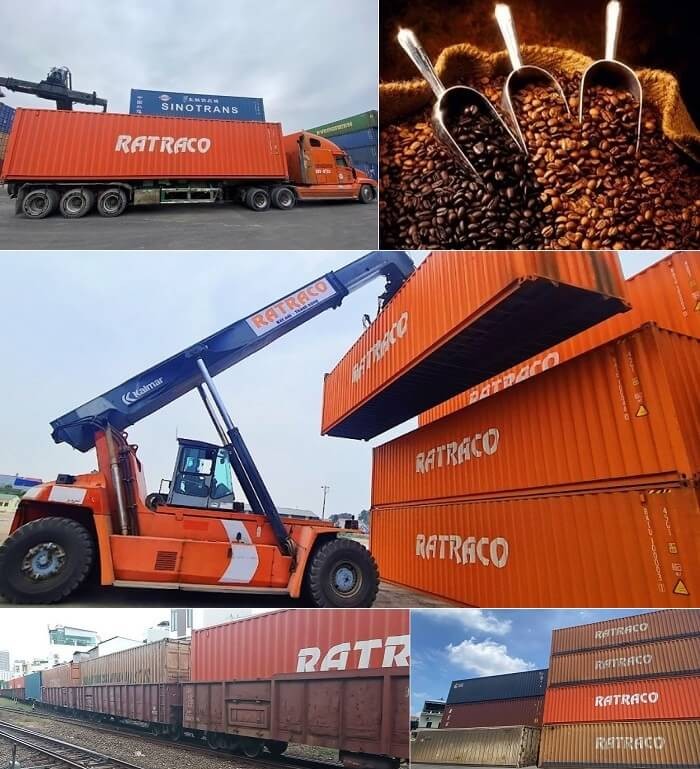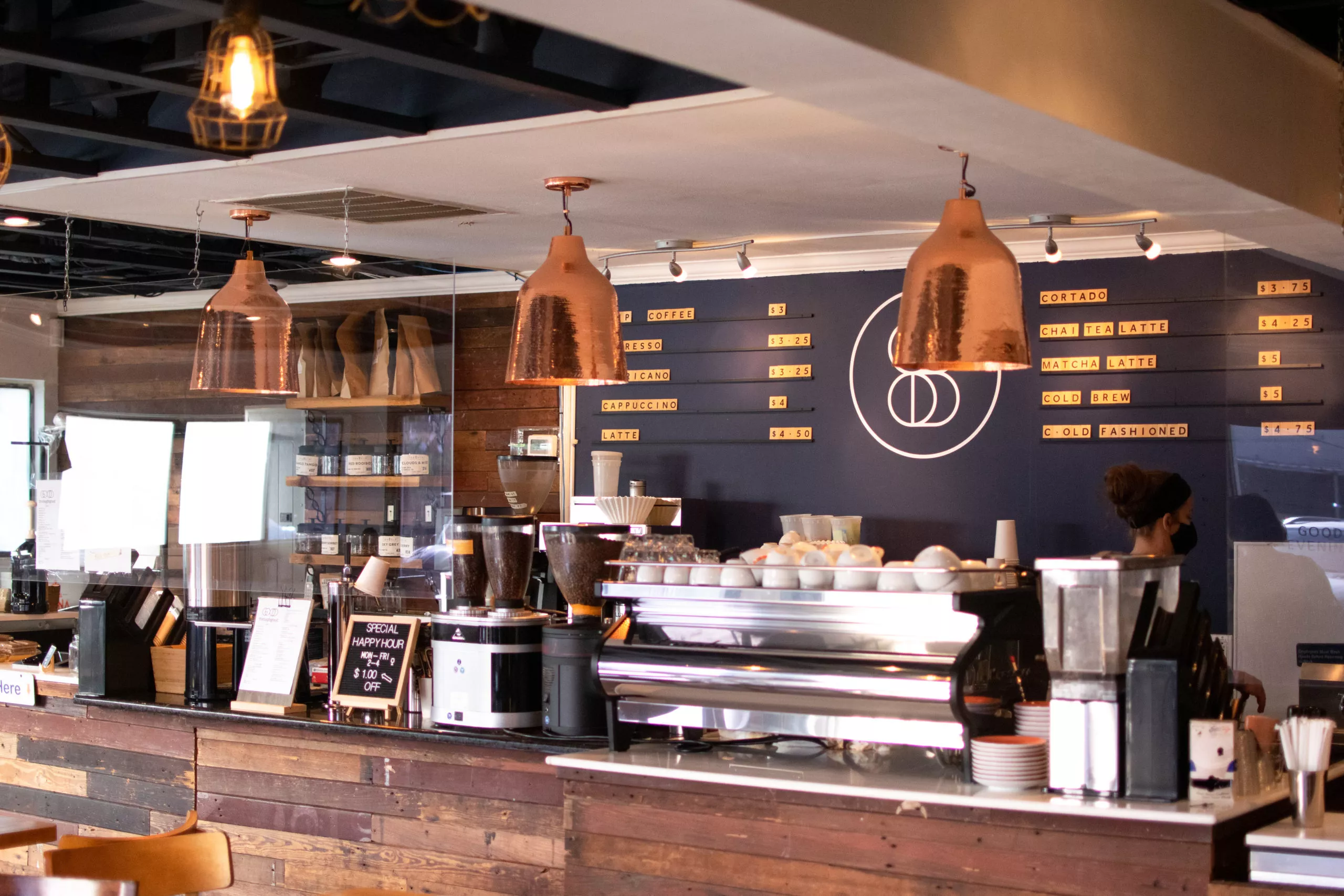Vietnam is the world’s largest Robusta coffee producer and second-largest coffee exporter globally. With abundant raw materials and a rich coffee culture, many entrepreneurs are looking to tap into this potential. But which path is the right fit for you?
Each coffee business model has its own logic regarding startup capital, operational scale, and market approach. This article analyzes three main directions: coffee roasting and retail, franchise operations, and international export, helping you make an informed decision based on your resources and business goals.
1. Coffee Roasting Business
The coffee roasting business model allows you to control the entire value chain from selecting green beans, roasting, packaging, to selling directly to customers. This is a popular choice for those wanting to build a local coffee brand with unique identity.

Startup Capital and Infrastructure
Small-capacity roasting machines (5-15kg per batch) suitable for startups cost $3,000-8,000. Grinding equipment, packaging machines, and production space meeting food safety standards require an additional $5,000-10,000. Total initial investment ranges from $15,000-30,000 depending on scale.
Unlike retail coffee shops requiring expensive storefronts, roasting facilities can be located in industrial zones or suburbs with reasonable rental costs. The key is ensuring proper ventilation, smoke removal systems, and compliance with HACCP regulations if you plan to expand distribution.
Core Skills and Operations
Coffee roasters need to understand roast profiles – how temperature, time, and rate of rise affect flavor development. Vietnamese Robusta has different characteristics from Arabica: it tolerates higher temperatures, requires shorter roasting time (12-15 minutes vs 15-18 minutes), and is prone to burning if the first crack stage isn’t properly controlled.
You need to establish a cupping protocol to consistently check quality. Detailed batch logging helps replicate successful profiles and troubleshoot issues quickly.
Distribution Channels and Brand Building
Distribution channels are diverse: selling online through websites and marketplaces, supplying small cafes, participating in farmers markets, or partnering with organic food stores. Each channel has specific requirements for packaging, pricing, and payment terms.
Storytelling is the key. Coffee consumers want to know where their coffee comes from, who roasted it, and what makes it special. Robusta from Dak Lak has a completely different cup profile compared to Robusta from Dak Nong or Lam Dong. Clarifying origin and processing methods builds customer trust.
Profit Margins and Challenges
Gross margins in coffee roasting range from 40-60%. If you purchase green coffee at $2.5/kg, roasting and packaging costs $1/kg, and sell at $8-10/kg in the domestic market, gross profit is approximately $4.5-6.5/kg.
The biggest challenge is inventory management. Roasted coffee loses aroma after 3-4 weeks without one-way valve vacuum packaging. Accurate demand forecasting helps avoid waste and ensures freshness.
Competition is fierce in the budget segment with established coffee brands. To stand out, focus on niche markets: single-origin coffee, roasted-to-order services, or high-quality specialty Robusta rather than competing on volume.
Read more: Is Opening a Coffee Shop Profitable?
2. Coffee Franchise Model
Franchising is suitable when you’ve successfully operated your own coffee chain and want to expand rapidly without directly investing in each new location. This business model transfers brand, recipes, and know-how to franchisees in exchange for fees and royalties.

Preparing Your Franchise System
Before franchising, you need to standardize everything: beverage recipes (with precise measurements), operational procedures (SOPs for each position), space design (standard layouts), and marketing materials. The operations manual must be detailed enough that someone without experience can follow it.
Legal framework is equally important. Franchise agreements need clarity on: term length, exclusive territory, obligations of both parties, termination conditions, and dispute resolution mechanisms. Consult with franchise attorneys to avoid legal risks.
Fee Structure and Cash Flow
Initial franchise fees in Vietnam range from 300-800 million VND (~$13,000-35,000) depending on brand recognition. This is a one-time payment compensating for training costs, setup, and brand value.
Royalty fees typically run 3-6% of revenue or fixed monthly fees. Marketing fees add another 1-2% to maintain centralized brand promotion. This structure creates steady and continuous cash flow.
Franchisors also profit from supplying required raw materials. If franchisees must purchase coffee beans, syrups, and powders from the franchisor with a 15-25% markup, this becomes a major revenue stream while ensuring consistent quality.
Support and Quality Control
Franchisors need to invest in training teams. Training programs lasting 2-4 weeks cover: barista skills, customer service, shift management, and POS system operations. After opening, field consultants regularly inspect and support to maintain standards.
Periodic mystery shopping helps evaluate actual service quality. If franchisees consistently fail to meet standards, franchisors have the right to intervene or terminate contracts to protect the overall brand.
Risks and Success Factors
Strong brand recognition is essential. If the brand lacks high awareness and a proven concept, it’s difficult to attract quality franchisees. Many franchisors fail by selling franchises too early when the original model isn’t yet consistently profitable.
Choosing the right franchisees is more important than choosing many. Franchisees with entrepreneurial spirit, long-term commitment, and system compliance will help the brand grow more sustainably than passive investors.
Read more: Should I open a franchise coffee shop?
3. Coffee Export Business
Coffee exporting is a large-scale B2B model suitable for businesses with the capacity to source large volumes, maintain strict quality control, and understand international logistics.

Export Readiness Preparation
Registering as an export business requires an import-export code and proper business licenses. The Vietnam Coffee and Cocoa Association (VICOFA) provides market information support and business networking.
Quality certifications expand opportunities: UTZ, Rainforest Alliance, Fair Trade, or Organic depending on target markets. Europe and the US prioritize sustainability certifications, while Asian markets focus on price and supply stability.
Significant working capital is needed. The cycle from purchasing green beans to receiving export payment typically takes 2-3 months. With a 18-ton container valued at $45,000, you need cash flow or L/C (letter of credit) to operate multiple orders simultaneously.
Finding Customers and Building Relationships
International trade shows like SCA Expo, World of Coffee, and SCAJ are venues to meet importers, roasters, and distributors. Trade missions organized by the Ministry of Industry and Trade also create B2B matching opportunities.
Online platforms like Alibaba, EC21, and Global Sources help reach customers, but be cautious of scams. Verify buyers through trade references, video calls, and require L/C payment for first orders.
Relationships matter more than transactions. Export customers seek reliable suppliers for quality consistency, on-time delivery, and communication. Fast sample shipping, 24-hour email response, and transparency about crop situations build long-term trust.
Logistics and Pricing Strategy
Understand Incoterms clearly: FOB (Free on Board) – you’re responsible until goods are loaded on the vessel; CIF (Cost, Insurance, Freight) – you handle shipping to the destination port. Each term affects pricing and distribution responsibility.
Standard export packaging: 60kg jute bags or GrainPro for specialty coffee, 20ft containers hold 275-300 bags. Fumigation and certificates of origin per importing country requirements. One documentation error can cause cargo detention at port, costing thousands in demurrage fees.
Export profit margins are thinner than retail (5-15%), but volume compensates. Competitive advantages come from: direct farm sourcing (reducing intermediary costs), good processing procedures (uniform screen size, moisture control), and flexibility in customization (roast level, blend ratios).
Market Risks and Volatility
Coffee prices fluctuate strongly with international trading floors (ICE). Price hedging through futures contracts helps lock prices and reduce risk, but requires understanding commodity trading or working with professional brokers.
Currency fluctuation impacts profitability. A weak VND helps export margins, but VND strengthening after signing fixed USD contracts can turn margins negative. Forex hedging tools are necessary for large long-term orders.
Trade policy changes like tariffs, quotas, or residue regulations also impact business. Closely monitor FTAs (Free Trade Agreements) that Vietnam has signed like EVFTA and CPTPP, which offer significant tariff preferences.
Read more: How to import coffee from Vietnam?
4. Comparison and Choosing Your Path
Capital Investment and Scale
- Coffee Roasting: $15,000-30,000, start small and scale gradually
- Franchising: $50,000+ for system preparation, then collect fees from franchisees
- Exporting: $100,000+ for working capital and infrastructure
Required Skills
- Roasting: Roasting technique, product development, local marketing
- Franchising: Systemization, training development, legal compliance
- Exporting: International trade, logistics, quality control at scale
Time to Profitability
- Roasting: 6-12 months when stable distribution channels are found
- Franchising: 18-24 months after sufficient franchisee operations
- Exporting: 12-18 months when relationships and volume are established
Market Ceiling
- Roasting: Limited by production capacity and local reach
- Franchising: Scales quickly through franchisee capital but depends on brand strength
- Exporting: Largest potential with global markets and Vietnam’s competitive position

5. Final Thoughts
There’s no “best” model – only the most suitable model for your resources, skills, and vision.
If you’re passionate about craft coffee and want end-to-end product control, roasting allows creative expression and direct customer connection. If you have a proven brand and want rapid scaling, franchising expands footprint with partner capital. If you have trade and logistics capabilities, exporting opens billion-dollar markets for Vietnamese coffee.
Many successful coffee companies combine all three approaches. Start with roasting to understand products and markets, develop into franchising with a proven model, and simultaneously export to leverage economies of scale. Each model can feed into others: reputation from specialty roasting makes exporting easier, and export volume creates pricing power when negotiating with suppliers.
What matters most is starting with a clear strategy, understanding your strengths and constraints, and being ready to learn from the market. Vietnam’s coffee industry is transforming from commodity producer to value creator. Opportunities abound for those who know how to capitalize on them.
